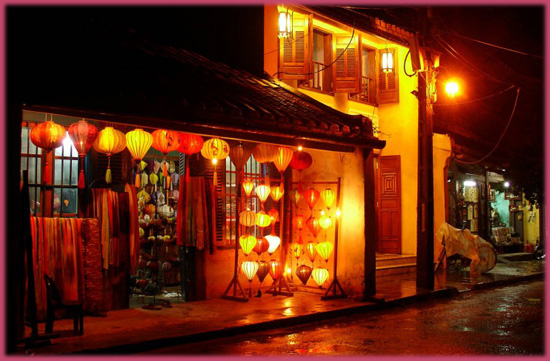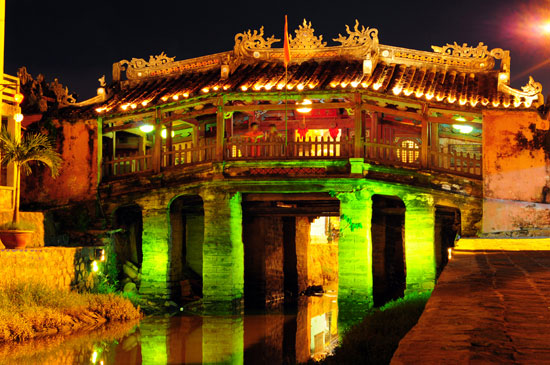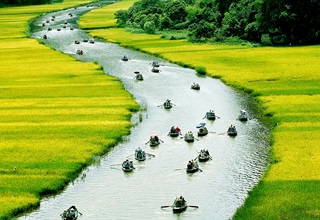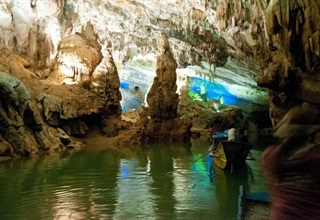(Cinet)- Hoi An town is located in central Quang Nam province, 25 km Southeast of Da Nang city and 50 km northeast of Tam Ky city. It lies in a coastal estuary area, where big rivers, including Thu Bon, Vu Gia, Truong Giang and De Vong, meet before flowing into the East Sea through Cua Dai estuary.
Thanks to these rivers, people from Hoi An can go upstream on the Thu Bon River to Dien Ban, Duy Xuyen, Que Son and Dai Loc districts or downstream on the Truong Giang River to Thang Binh, Tam Ky and Chu Lai districts. From Cua Dai estuary, people can reach all regions in the country and the world by sea.
There are more than 1,350 relics, including 1,273 civil architectures (houses, bridges, wells and markets), religious architectures (pagodas, temples and family houses of worship) and specific architectures (such as tombs).
Each type of architecture contains particular features, contributing to Hoi An’s cultural diversity. Of which, its architecture complex is considered a “live museum” as the residents of Hoi An have “lived in the town, lived with the town, and lived for the town” for generations. Their daily lives go on within the ancient town; each piece of architecture is imprinted with the residents’ particular lifestyle and culture.
 |
Hoi An is inhabited by people from various strata, origins and ethnic groups. It is from where Catholicism and Buddhism spread in southern Vietnam , one of the two birthplaces of Vietnamese script in the 17 th century (the other is Hanoi ), and the crossroads for Champa-Vietnamese-Chinese-Japanese-Indian civilisations and western countries.
Cultural features of different origins have formed unique aspects of Hoi An’s intangible cultural treasures. The main stream is the system of customs and faiths of Vietnamese and Chinese-Vietnamese communities.
 |
Traditional festivals take place around the year in Hoi An, such as fishermen festivals like the Cau Ngu (praying for a good fishing harvest) festival, the whale worshipping festival, boat races, and festivals to worship the ancestors of carpentry, tailoring and pottery.
In recent years, modern festivals together with cultural and tourism events, and big ceremonies have attracted a large number of local residents and tourists.
The ancient town was recognised as a World Cultural Heritage by UNESCO on December 4, 1999, and presented four awards in heritage management, protection and promotion.
To uphold its values, the ancient town has taken audacious measures. It has banned motorbikes and the use of electricity during certain hours. It has provided free wi-fi service across the locality. These make Hoi An’s rhythm of life “slower” but more colourful, attracting greater numbers of tourists, especially from abroad.
Tours for visitors to experience farmers’ life and discover the Cu Lao Cham Biosphere Reserves and nipa forests are also available. In addition, the town has organised cultural events like Vietnam-Japan cultural exchanges, international choruses and heritage journeys, drawing the participation of representatives from various countries and popularising Hoi An to the world.


















COMMENTS